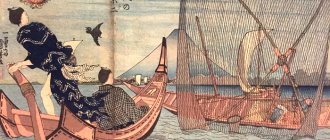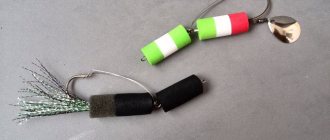Tsutomu Miyazaki
Japanese justice gave the strangler and necrophiliac Miyazaki a luxurious gift, giving him an extra 20 years of life. Although the oldest victim of the Japanese maniac was only seven years old.
1 On June 7, 2008, 45-year-old serial killer Tsutomu Miyazaki was hanged in Kosuga Prison on the outskirts of Tokyo. Only a surge of public indignation forced the authorities to carry out the sentence passed back in the last century. In the painted world, there is no need to say much about the fact that Japan is a specific country. Among other local oddities, one can highlight the “otaku” phenomenon. It consists in the fact that many people are immersed in the world of manga and anime - comics and cartoons of various genres, including pornographic, bloody and sadistic.
And now one of them, a native of the capital Tsutomu Miyazaki, decided to turn his drawn fantasies into reality. Born premature, Tsutomu had a serious defect - deformed wrists. Because of this, the boy was subjected to ridicule from his peers. In elementary school he was one of the best students, but by the end of it all his success had faded away. And you couldn’t count on the sympathy of girls with such deformity. The inferiority complex was also reinforced by the too small genital organ, which was made fun of by classmates.
Therefore, the matured Miyazaki did not even try to start a romantic relationship, but limited himself to porn magazines. Having studied photography in college, Tsutomu got a job in a printing house, but continued to live in the world of manga and anime. His workaholic parents paid little attention to their son, only his grandfather gave the boy the communication he so lacked. However, in May 1988, his grandfather died, and Miyazaki later admitted that after the cremation he secretly ate several handfuls of his ashes. Thus, the young man wanted his grandfather to be reincarnated in his body. True, in order for his plan to come true, according to the maniac, it was necessary to be imbued with the vital force of virgins. But how to do this if he was afraid to even look the girl in the eyes?
There was only one way out for Miyazaki: the virgin should be so small that even a timid guy like him could handle her. And before that, Miyazaki decided to practice on animals. “I killed the cats,” he admitted to the investigator. “I threw one into the river, and boiled the other in boiling water.” A day later, the scumbag strangled his beloved dog with a provocateur.
For several days, in search of a victim, Miyazaki drove his Nissan through the suburbs of greater Tokyo. Finally, on August 22, 1988, in the town of Iruma, he noticed four-year-old Marie Konno walking down the street. Miyazaki stopped the car next to the baby, smiled broadly, asked her name, and, citing the heat, offered to give her a ride in an air-conditioned car. The little one agreed, and Miyazaki stepped on the gas. A few minutes later his car was already driving along a dirt road, and soon stopped in the forest. Tsutomu took the girl out of the salon and said that they needed to go down the hill.
Japanese maniac
Already on the path, Marie began to sob. When the frightened girl burst into tears, Miyazaki, no longer able to restrain himself, squeezed her throat with his hands. He continued to strangle Marie even when she lost consciousness, and after killing her, he decided to examine the child’s genitals. When leaving, he took the children's things with him, and left the corpse itself lying in the thickets.
The search for Marie began two hours later, when it became clear that she was missing. Police found two witnesses who testified that the girl left with a stranger. His description matched the appearance of Miyazaki, as well as two or three million other young Japanese. 50 thousand posters describing Marie were hung around the area.
All this time, the killer was watching news broadcasts, where the baby’s mother expressed hope that her daughter was alive. The maniac sent her a postcard with the message: “There are many devils wandering around.” The police regarded this message as the ravings of a madman.
Tsutomu Miyazaki
Six weeks after the first crime, the maniac went hunting again. In the town of Hanno, he noticed first-grader Masami Yoshizawa, stopped a car next to her, offered to take her home, and she agreed. But the executioner took the seven-year-old victim to the same place as Marie, to the hills above the Komine Gorge. Having pulled the captive out of the salon, Tsutomu strangled her, and then decided to get rid of his virgin complex. While the dead girl was frozen, the scumbag raped her, after which he threw the corpse 100 meters from Marie’s body.
As in the previous case, the police and volunteers searched for the child, but to no avail. One of the investigators noticed that both missing people lived in the same area, but this could just be a coincidence.
The maniac met his new victim, four-year-old Erica Nambu, on December 12, 1988. As usual, he spoke to her and offered her a ride. Already inside the car, Miyazaki ordered Erika to take off her skirt and began taking photographs. The tears welling up in the girl’s eyes angered the killer, he grabbed Erica by the throat and strangled her. The executioner wrapped the still warm body in a sheet, while his Nissan got stuck on the side of the road, and when Tsutomu carried the corpse into the bushes, he turned on the emergency lights. Upon his return, two drivers were already waiting for the killer who wanted to help. When he was pulled out in tow, Miyazaki left without even thanking him. That's why he was remembered.
Trial of Japanese Murderers and Torturers May 3, 1946
Anatoly Koshkin, May 2, 2021, 12:55 — REGNUM After the Japanese government and command became aware of the terms of surrender set out in the Potsdam Declaration of the Allied Powers of July 26, 1945, intensive meetings were held in Tokyo to develop a response to the ultimatum. If politicians from the “peace party” were ready to accept all the provisions of the declaration and announce surrender, the Japanese generals opposed this, trying to stipulate the agreement to end the war on their own terms. At the same time, fearing retribution for the monstrous war crimes committed by the Japanese army, they opposed the 10th paragraph of the Potsdam Declaration, which stated: “We do not seek that the Japanese should be enslaved as a race or destroyed as a nation, but all war criminals, including those those who committed atrocities against our prisoners must suffer severe punishment.” Japanese generals advocated that war criminals “be punished by the Japanese themselves.”
USSR - Japan
Ivan Shilov © IA REGNUM
By that time, the Japanese elite already knew the agreement of the governments of the Soviet Union, the USA, Great Britain and France of August 8, 1945 on the organization of an international trial of the main war criminals of Nazi Germany. It was clear that such a trial could not be avoided against Japanese politicians and military personnel guilty of committing monstrous crimes during the war, which were not inferior to, and in some cases even surpassed in cruelty, the inhumane acts of the German Nazis.
Japanese surrender. September 2, 1945
In the Instrument of Surrender signed on September 2, 1945, the Japanese government committed itself to “fairly fulfill the terms of the Potsdam Declaration, give such orders and take such actions as the Supreme Commander of the Allied Powers or any other representative appointed by the Allied Powers requires in order to implement this Declaration.” . This also extended to the holding of the International Military Tribunal for the Far East (Tokyo Trial), which took place from May 3, 1946 to November 12, 1948.
To conduct the process, a special judicial body was formed, which included representatives of eleven states: the USA, USSR, China, Great Britain, Australia, Canada, France, the Netherlands, New Zealand, India, and the Philippines. At the same time, the main role in organizing and conducting the process, at the direction of Washington, was taken by the commander-in-chief of the allied occupation forces, American General Douglas MacArthur. It was on his orders that on September 11, 1945, arrests of persons suspected of war crimes who held leadership positions in militaristic Japan began. In total, 29 people from among the top military and civilian leadership were brought to trial. Two defendants, including the former Japanese Foreign Minister Yosuke Matsuoka, who signed the Soviet-Japanese Neutrality Pact in Moscow in April 1941, and two months later, who called on the emperor and the government to attack the USSR, died during the trial. One, the ideologist of chauvinism and militarism Shumei Okawa, was declared insane due to mental illness (it is possible that it was staged) and for this reason was removed from among the accused. And Prince Fumimaro Konoe, who served as prime minister three times, including at the beginning of Japan’s full-scale aggression in China in July 1937, committed suicide on the eve of his arrest.
Neutrality Pact between the USSR and Japan of April 13, 1941
World Imaging
The charges were divided into three categories: A, B and C.
Category A included charges of crimes against peace - planning and waging aggressive war and violating international law. It was used only against the top leadership of Japan.
Category B included charges of mass murder.
Category C—charges of crimes against the customs of war and crimes against humanity—applied to Japanese of any rank.
The defendants completely denied their guilt or referred to “forgetfulness.” All of them had professional defenders, including American ones, who, according to eyewitnesses, “resorted to all sorts of dishonest methods: they intimidated witnesses, in every possible way persuaded them to knowingly give false testimony in favor of the defendants, tendentiously manipulated facts and documents, presented poor-quality evidence, in particular documents of dubious origin, and presented forgeries, which had already been rejected by the Tribunal once.” This behavior of American lawyers was explained by the fact that the American government, already in the first years of the occupation of Japan, set out to turn this country into a “bastion of the fight against communism”, into an “unsinkable aircraft carrier” of the United States, aimed against the USSR and the East Asian peoples who were fighting for freedom and independence. Therefore, the American authorities did not want to demonstrate cruelty towards their future ally, trying to retain leadership cadres to manage the vassal country. The Americans pursued the same goals, rejecting the demand of the USSR and China to bring to trial as an accused the Emperor of Japan Hirohito, who throughout the years of the war, with the rank of Generalissimo, was the commander-in-chief of the imperial army and navy and was responsible for both the outbreak of wars and the cruel methods of waging them.
Thanks to the Americans, the owners of the largest Japanese monopolies, the Zaibatsu, who, as arms manufacturers, were very interested in starting wars abroad, including with the aim of seizing the resources of the captured countries necessary to expand production and enrich the owners of the industrial concerns of the Rising Country, did not end up in the dock sun. The Soviet prosecutor's proposals to bring to trial the owners of the largest military industry enterprises were rejected. Because the United States needed them too to restore Japan as a Far Eastern military-political ally.
Bombs Flying on Kobe, Japan (1945)
But attempts by lawyers to acquit the defendants or to downplay their guilt in order to save the lives of the main Japanese war criminals were met with irrefutable evidence of mass murder not only of enemy soldiers, including prisoners of war, but also of defenseless women, children and the elderly, who were killed as unnecessary “second-class citizens.” There is a direct analogy with the genocide of Jews, Gypsies, Slavs and other “subhumans” by the German Nazis. The destruction of the Chinese, Koreans, Vietnamese, Filipinos and other peoples of East Asia was a common practice when the Japanese ruled the conquered countries. Therefore, the Tribunal rejected the attempts of the defense lawyers to whitewash the acts of the defendants, not even including them in the court materials.
Let us give only a small fragment testifying to the genocide of the Chinese people using the example of the “Nanjing massacre”, when, after capturing the capital of the Republic of China, Nanjing, Japanese soldiers and officers, without any military necessity, one might say, for entertainment and “psychological release”, according to Chinese data, killed in a few days, about 300 thousand civilians of this city. For example, the Japanese newspapers Osaka Mainichi Shimbun and Tokyo Nichi-Nichi Shimbun widely covered the “competition” between two officers who wanted to find out which of them would be the first to kill a hundred Chinese with a katana sword.
Ditch containing the bodies of Chinese prisoners killed by the Japanese
Witnesses told at the Tokyo trial how hundreds of Nanjing residents were buried alive in the ground, burned at the stake, and dismembered alive. Prisoners of war were also killed en masse. On December 18, 1937, during the capture of Nanjing, the Japanese shot and drowned 57 and a half thousand soldiers and officers of the Chinese army in an hour in the Yangtze River.
During the trial, the facts of the inhumane so-called “Bataan Death March” were revealed, when, after the capture of the Bataan Peninsula in the Philippines, more than 70 thousand local and American prisoners of war were driven over gravel under the scorching sun to a concentration camp located about 100 kilometers away. Thousands of prisoners died en route from disease, exhaustion, dehydration, overheating, untreated wounds, and wanton executions. The fallen, exhausted people were run over by tanks. The total number of deaths along the way is estimated at 5-10 thousand Filipinos and 600-650 Americans. The regime in prisoner-of-war camps was also extremely cruel, where not only international agreements on the maintenance of captured enemy soldiers and officers were not observed, but also elementary universal norms of humanity were not observed.
These and numerous other cases of murder and abuse of prisoners of war and the civilian population of countries captured by the Japanese army were established and brought forward as charges against the defendants. During the trial, 818 public court hearings and 131 court hearings were held; The tribunal accepted 4,356 documentary evidence and 1,194 witness statements, of which 419 were heard directly by the tribunal.
Nanjing massacre. The Japanese killed everyone, regardless of gender or age. The soldiers threw up the babies and shot at them, like in clay pigeon shooting.
And although not all war criminals received the deserved punishment, the most odious political and military figures of the militaristic regime were convicted by the Tokyo Tribunal. The seven defendants, including two former prime ministers Koki Hirota and Hideki Tojo, were sentenced to death by hanging and executed on December 23, 1948, in the courtyard of Sugamo Prison in Tokyo. 15 defendants were sentenced to life imprisonment, three more to varying terms of imprisonment.
The American authorities, pursuing their own interests, did not agree to bring to justice the Japanese “monsters in white coats” who, under the guise of “scientific research,” produced bacteriological weapons in huge quantities, killing thousands of people called “logs” in brutal experiments. In the Khabarovsk trial that followed Tokyo in the case of twenty former Japanese army servicemen accused of developing and using bacteriological weapons (December 25-30, 1949), monstrous facts of the preparation of deadly disease bacteria in “Detachment 731” created by decree of the Emperor of Japan were revealed. According to a former employee of this detachment, there were so many such bacteria stored awaiting use that “if they were scattered across the globe under ideal conditions, this would be enough to destroy all of humanity.” But in the dock there was no main ideologist and strategist of bacteriological warfare - the head of “detachment 731”, Lieutenant General Shiro Ishii, whom the American authorities hid from trial for transmitting documentation about brutal “experiments” on living people.
International Military Tribunal for the Far East. Accused Japanese
Tante2.com
In conclusion, we note that the right-wing revanchist forces in Japan today continue to reject the verdicts of the Tokyo Tribunal, calling it an unjust “court of the victors.” The souls of the executed main Japanese war criminals were canonized in the militaristic Yasukuni Shrine, where members of parliament from the ruling party, members of the government, and even prime ministers regularly go to commemorate, ignoring the indignation of the peoples - victims of Japanese militarism.
And on August 16, 1960, a monument to the seven main Japanese war criminals hanged in 1948 was unveiled on the top of Mount Mikenoyama near the city of Nagoya. The inscription was carved on it: “Tomb of the Seven Samurai Martyrs.” At the opening of the monument they were given due honors. In January 1964, the approximately two million Japanese who died in World War II were posthumously awarded. Openly opposing the pacifist provisions of the post-war Constitution of Japan, the leaders of the ruling Liberal Democratic Party, including the ideologist of the revival of the “beautiful old Japan”, former Prime Minister of Japan Inzo Abe , worship the souls of executed war criminals, do not recognize the decision of the Tokyo Tribunal and call for the revival of the Country rising sun again as a military power...
Hello from a maniac
Only after the disappearance of the third girl did the police realize that there was a maniac operating in Saitama Prefecture. Soon, a large-scale search yielded results: Erica’s corpse was found in the forest. And later the same assistants who pulled out Miyazaki’s Nissan contacted the police. However, they made a mistake by indicating a different make of car - Toyota.
After checking six thousand Toyotas, the police found no one. Miyazaki, meanwhile, fueled interest in his crimes. He called the parents of the dead and remained silent on the phone. Then he sent a postcard to the Namba family with cut-out magazine letters: “Erica. Cold. Cough. Throat. Rest. Death".
On February 10, 1989, the maniac threw a box at the door of the parents of the first victim. In it, the girl’s father found charred bones, 10 baby teeth, photos of Marie’s shorts, sandals and panties, and a message: “Marie. Bones. Cremation. Investigate. Prove".
After examining Miyazaki’s “gifts,” the police determined that the photographs were taken with a professional camera used in printing houses. And the copying machine on which the letter was copied is also of an industrial type. Much indicated that the sender worked in a printing house, but they did not seriously pursue this thread. By the summer of 1989, Miyazaki was bored again. On June 6, he spotted five-year-old Ayako Nomoto in a park near Tokyo Bay. Approaching her, Tsutomu treated her to chewing gum and asked her to pose. When the girl got used to him, Miyazaki suggested taking a few pictures inside his car. After taking the child out of the park, he continued clicking the shutter. Then Ayako saw his hands and involuntarily blurted out that she had never seen such terrible hands.
Tsutomu Miyazaki during an investigative experiment
“This is what happens to children who say such things,” the executioner flared up and began to strangle the child. After making sure that Ayako was dead, the maniac brought her body to his home and photographed her genitals. Two days later, the corpse began to emit an odor, then Miyazaki dismembered it and threw it near the toilet in the cemetery. But he left the child’s hands and head for later consumption.
On July 23, 1989, a Japanese maniac saw two Kawaguchi sisters, 9 and 6 years old. He ordered the eldest to stand still, and led the younger one into the forest. When the eldest called and brought the father to the place, he found Miyazaki photographing his daughter’s genitals. Fortunately, she was alive. The man attacked the pervert, but he managed to escape. A couple of hours later, Tsutomu returned to his car, where the police were waiting for him.
During a search of Miyazaki's apartment, among about six thousand videotapes with horror films, pornography and anime, police found photos and videos of the missing girls. And soon Tsutomu confessed to the murder of all four victims. The maniac justified himself by saying that a rat-man had settled in him and, they say, he was killing. However, although psychiatrists established a change in his personality, they declared him sane.
Due to examinations and other investigative details, the consideration of the case dragged on for almost a decade. Only in April 1997 did the court sentence the killer to death. The lawyers filed an appeal, insisting on the insanity of the client. The trials continued until the Japanese Supreme Court finally confirmed the death sentence on April 17, 2006. But only two years later it was carried out.
Mysterious Japanese ripper who leaves playing cards on corpses
Many people call these stories about the Japanese ripper ordinary urban legends or creepypastas (horror stories), because they say there are no real facts in favor of their authenticity.
In some ways, they are right, since in the criminal chronicles of Japan there really is practically no mention of a series of these murders, and those that exist are only meager notes without gory details.
However, you should know that in terms of crime, Japan is a rather closed country and some cases, especially serious crimes, may not go beyond police reports at all (Paranormal News - paranormal-news.ru).
This series of murders, known as the Alice Murders , took place from 1999 to 2005 and remained unsolved. The first victim was businesswoman Megumi Sasaki, a 29-year-old restaurant owner. She was socially active and often attended various parties.
That evening, Sasaki attended another party, where many people saw her, and at about 1 a.m. she went to her home. By that time, Sasaki was already quite drunk and therefore many people offered to give her a ride home, but she refused and decided to take the subway. This was the last time Sasaki was seen alive.
Early in the morning, a young couple was walking along a forest path in the suburbs, passing near Sasaki's house, and came across an eerie and surreal picture, similar to a scene from a horror film. Bloody pieces of a human body lay scattered across an area of several tens of meters, and internal organs were hung on branches and bushes like Christmas tree decorations.
When police arrived at the scene, they found a severed head, which identified the victim as Megumi Sasaki, and they also found a playing card lying among the body parts, with the word "Alice" written in blood on it.
Despite a thorough examination of Sasaki’s remains and the place where her body was found, no traces indicating a possible killer were found, so it was assumed that the woman was dealt with in such a terrible way by some kind of psycho who stopped taking his pills for a while.
For two years, the “psycho” calmed down, but on February 11, 2001, a new murder occurred and again a playing card with the name “Alice” was found next to the victim’s body. This time, a man, Akio Yamane, who was a musician and played in a local band, was killed.
At first, Yamane simply disappeared, stopped coming to band rehearsals, and when his concerned friends came to his apartment, they found the apartment empty. They notified police that their friend was missing because they knew he had no intention of leaving.
The police decided to look at the recordings from the surveillance camera installed on this building and saw a man in a jacket with a hood crawling out of the window of Yamane’s apartment, and with him he had a very large black garbage bag with something large and heavy. It was assumed that Yamane's body was in the bag, but why the killer would drag the body with him was completely unclear.
A week later, Yamane's decomposing body was found in the backyard of a bar he frequented during his life, with a bullet hole in his head. He also had a large open wound on his throat and a pathologist determined that the victim's vocal cords had been torn out. Next to the body was a playing card with the word "Alice".
Three months passed and suddenly a teenage girl, Sakura Kai, disappeared. She just graduated from high school. A large number of volunteers searched for the girl and two days later they found a strange mound with fresh soil near the abduction site. There was a stick sticking out of it, to which was stuck a playing card with the word “Alice”. When they dug up the mound, they found the body of the murdered Sakura.
The girl's corpse was severely mutilated, her eyes were cut out, her mouth was cut from ear to ear, and the skin was torn off from some parts of her body. Apparently, when the skin was torn off, the girl was still alive, as the wounds were bleeding heavily. In addition, on the girl’s head there was a plastic crown, which was sewn directly to the skin with threads.
Sakura's body was accompanied by a note that read, “Death is a distorted dream. She will reign forever. Ha! Ha! Those who died are the lucky ones."
The last victims of the cruel sadist were the minor brother and sister Hayato and Hina Oshiro. They were found dead in their own beds on April 4, 2005. An autopsy showed that they were poisoned by an unknown substance, while their bodies were neither mutilated nor mutilated. There were also no cuts, bruises or other wounds on them.
The only detail that made it possible to connect these two deaths with the previous three victims of the maniac was a playing card - an ace of hearts, cut in half and also with the inscription Alice on it. Moreover, the blood on this card did not correspond to the blood of the murdered children; it was taken from someone else (which remained unclear).
The parents of the murdered children were so shocked by their deaths that the mother soon committed suicide, and the father plunged into severe depression, in which he remains to this day.
In all five cases of the Alice Murders, no extraneous fingerprints or evidence other than playing cards were found on or near the bodies of the victims. Specialists in serial killers were also unable to build a portrait of the maniac, since he did not fit all their templates - his victims were of different genders, different ages, different social statuses and were killed in different ways.
The police detained only one suspect named Yuuto Sazuki, who was homeless and who was found wearing a coat that previously belonged to Akio Yamane. The police questioned Sazuki for a long time, but they could only find out that a certain “demon without a face” had given him his coat.










